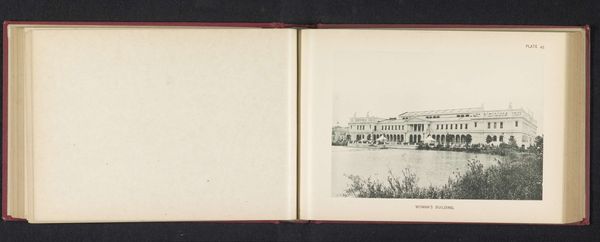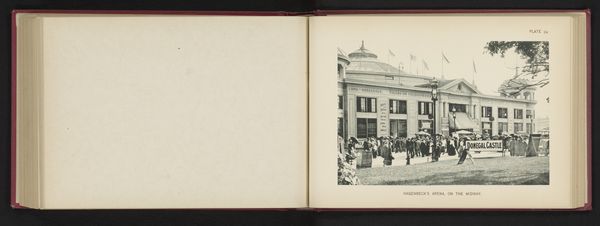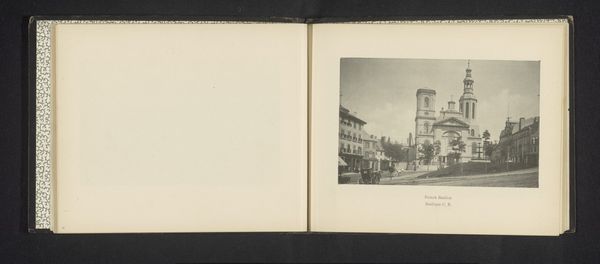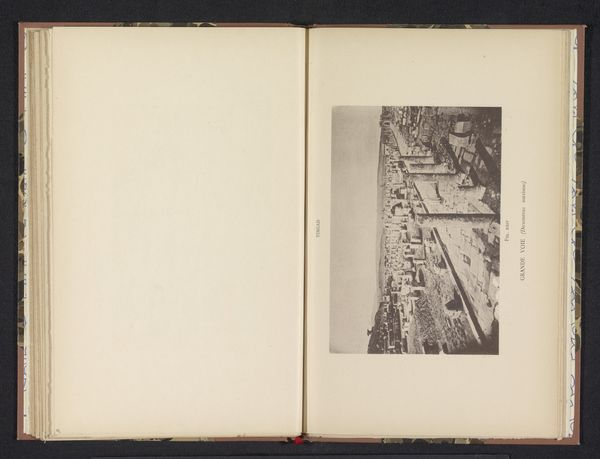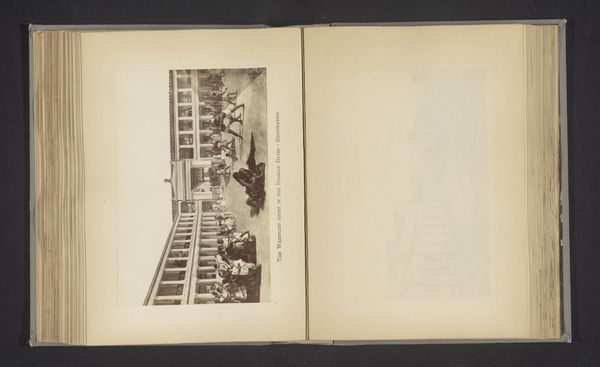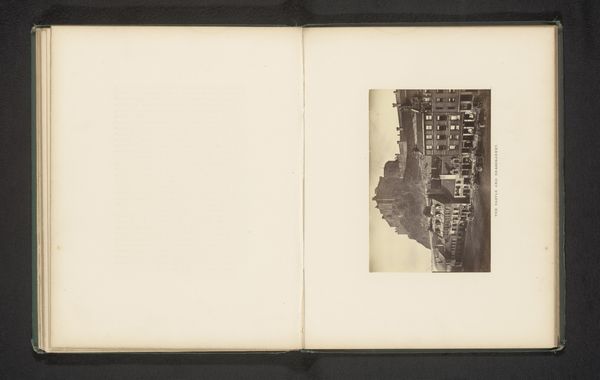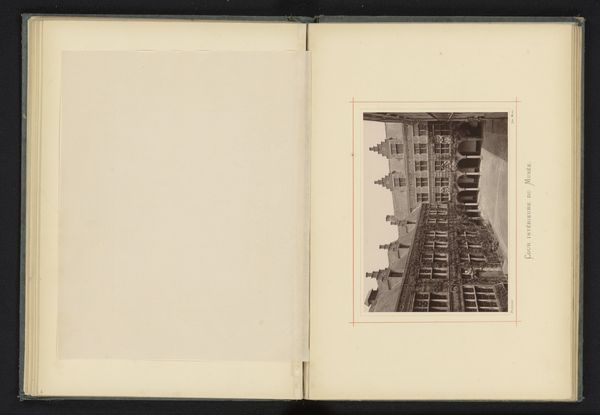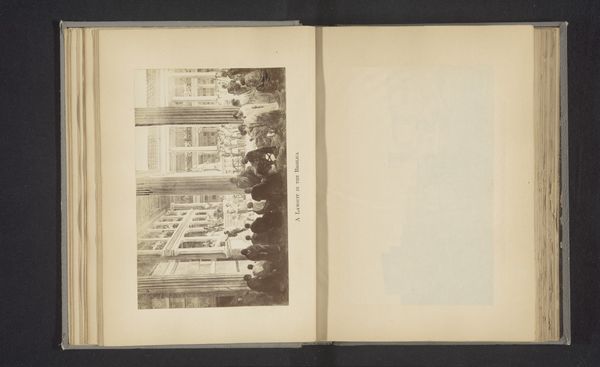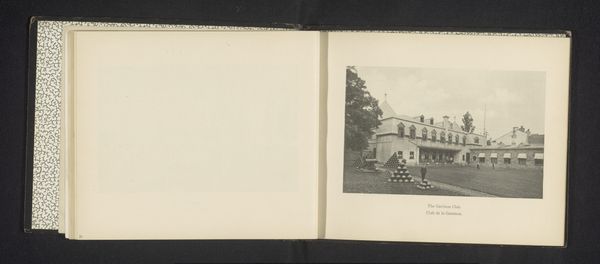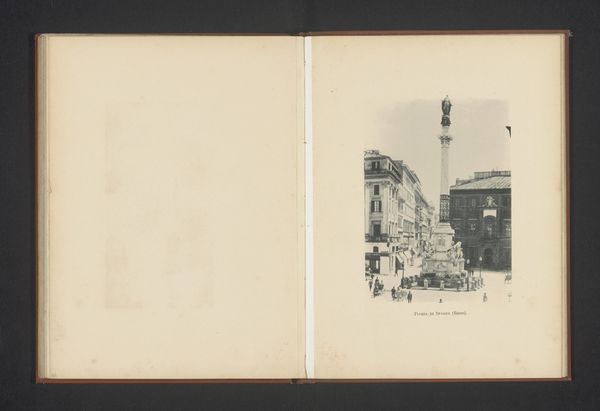
Gebouw van de World's Congress of Beauty, een soort modeshow, op de World's Columbian Exposition in Chicago in 1893 1893
0:00
0:00
print, photography
#
aged paper
#
homemade paper
#
pictorialism
# print
#
sketch book
#
personal journal design
#
paper texture
#
photography
#
personal sketchbook
#
hand-drawn typeface
#
photojournalism
#
sketchbook drawing
#
cityscape
#
sketchbook art
#
design on paper
Dimensions: height 134 mm, width 191 mm
Copyright: Rijks Museum: Open Domain
Curator: Let's discuss this striking image captured by Charles Dudley Arnold in 1893. It's a photograph titled "Gebouw van de World's Congress of Beauty, een soort modeshow, op de World's Columbian Exposition in Chicago in 1893"—or, in English, "Building of the World's Congress of Beauty, a kind of fashion show, at the World's Columbian Exposition in Chicago in 1893." Editor: It evokes such a sense of faded grandeur. The composition, with the imposing architecture dominating the scene and the suggestive presence of blurred figures, is intriguing. There is an aged texture, perhaps evidence of pictorialism’s interest in handmade printing papers and personal journals. Curator: I agree. The interplay of light and shadow emphasizes the building's facade, drawing attention to its architectural details and creating depth. But beyond the formal elements, it’s impossible to ignore what the Congress of Beauty represented, or what these so-called "World's Congresses" stood for. Editor: Absolutely. These expositions were potent symbols of colonialism and exclusionary aesthetics. This photograph documents a beauty contest – which begs the question: Beauty for whom? The racial undertones of defining and categorizing beauty standards on a global stage during this period is hard to ignore. Curator: The flags and orderly layout point to a clear assertion of control and power, aesthetically. Editor: Precisely. The photograph acts as a record, capturing a moment deeply embedded in complex narratives of gender, race, and cultural imperialism. Curator: The high vantage point and somewhat detached perspective seems to comment on those concepts in the image too. Editor: The blurred figures create a somewhat voyeuristic feeling. The casual public seating juxtaposed against the grand building only further highlights these cultural divisions. We’re viewing an orchestrated performance of societal values in material form. Curator: On one hand, this photograph acts as a lens into a specific moment in art history; while on the other, it reveals broader societal ideologies prevalent in that period. Editor: Ultimately, works like this encourage critical re-examination of historical narratives in relation to power, identity, and representation.
Comments
No comments
Be the first to comment and join the conversation on the ultimate creative platform.
